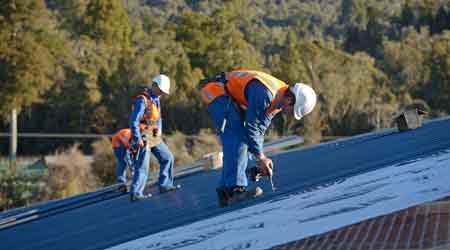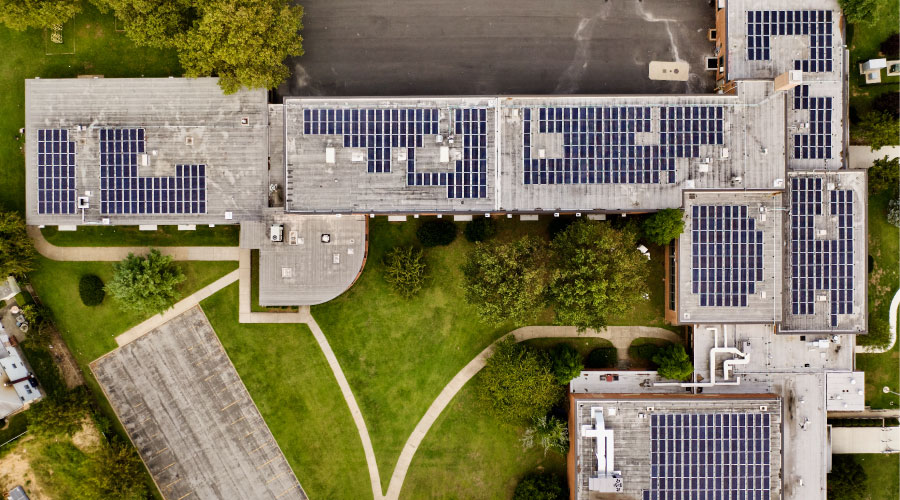Effectively Maintaining a Variety of Roof Systems
Effective roof management requires an understanding of system conditions and long-term facility plans
Effectively maintaining roofing systems is among the toughest challenges maintenance and engineering managers face, considering a roof’s complexity, its role in protecting facilities, and the cost of long-term roof management. At some point, a problematic roof presents managers with the toughest decision of all — whether to repair, replace or restore it.
Managers face a number of important steps in making this decision, including identifying factors that determine when repair or replacement is necessary, assessing when a roof is at the end of its life, ensuring technicians take steps to repair or replace to minimize life-cycle costs, and being proactive in the management of roof systems.
Understanding systems
Managers too often treat buildings in ways they would not treat their bodies. If you had a chronic condition, would you continually self-medicate and hope it helps? Probably not. Most likely, you would see a doctor who would examine you, determine the root cause of your conditions, and prescribe a course of action.
But when it comes to the roofs, managers and technicians often rush into action with the best of intentions by performing either repairs or replacement without knowing the true causes of the issues. This approach can lead to failed investments and continued problems. The best course of action is to let the roof’s condition dictate the course of action. To do that, it is critical to have base-level knowledge of roof systems technology.
The roofing marketplace features more than 300 types of roof systems, and each system offers different applications and benefits. Among the most common system types are single-ply, built-up (BUR), modified bitumen, and metal.
Single-ply. These membranes are factory-manufactured sheet products and are commonly referred to by their chemical acronyms, such as polyvinyl chloride (PVC), thermopolyolefin (TPO), and ethylene propylene diene monomer (EPDM).
Thermoplastic single-ply materials set irreversibly after heating. This material can be repeatedly softened when it is heated and then hardened when it is cooled, due to its chemical nature. The two thermoplastic membranes most commonly used are PVC and TPO.
Among the systems’ advantages: They have high reflectivity if completed in white, they have monolithic heat-welded seams that provide a low instance of seam failure if installed correctly, and they are designed to be flexible and conform to roof movement.
Among the systems’ disadvantages is that ultraviolet (UV) light will cause them to crack and become embrittled over time due to plasticizer migration.
Thermoset single-ply materials incorporate principal polymers that are chemically cross-linked or cured. One characteristic of true thermoset polymers is that once they cure, they only can bond to similar materials with adhesives. EPDM, a rubber material, is the most common type of thermoset membrane.
Among the systems’ advantages: They are flexible, and they offer quick installation and low initial cost. Among the systems’ disadvantages is their low resistance to punctures.
The performance of a single-ply system is typically 8-25 years, depending on the thickness and installation, whether mechanically attached, ballasted, or fully adhered. TPO membranes are relatively new to the market, which means their performance record has not been fully determined.
Built-up. BUR roofing systems are composed of several bituminous and felt layers and typically are surfaced with a coating or aggregate. The bitumen material commonly used is asphalt or coal tar pitch. The fabrics or felts, called ply sheets, commonly consist of fiberglass, polyester or organic mats, depending on the application.
Among the systems’ advantages are ply redundancy, a high abuse tolerance, and a high resistance to punctures. Among their disadvantages: relatively high initial cost, limited flexibility, and a slow installation process.
BUR system performance is in the range of 20-40 years.
Modified bitumen. Polymer-modified, or modified bitumen, systems are composed of reinforcing fabrics that serve as carriers for the hot polymer-modified bitumen as it is manufactured into a roll material. System membranes are composed of multiple layers, much like BUR membranes, and they typically are installed as a two-ply system with the modified bitumen cap sheet installed afterward.
Among the systems’ advantages: ply redundancy, high abuse tolerance, and consistent controlled quality. Among the systems’ disadvantages: higher initial cost, a slow installation process, and weak seams. The performance life is generally 15-25 years.
Metal. Metal assembly roof systems are either structural or architectural and can be formed from various types of metal, including aluminum, copper, galvanized steel, stainless steel, and zinc, depending on the application. Structural systems are installed directly over purlins and serve as both the roofing panel and structural decking. Architectural panels are installed over a structural roof deck, which generally is wood sheathing.
All metal roofs are hydrokinetic, meaning they are designed as water-shedding systems, so the design should incorporate positive drainage.
Among the systems’ advantages: industrial, aesthetically pleasing, and restorable. Among the systems’ disadvantages: water-shedding and maintenance-intensive. System performance life is 25-50 years, depending on the system used.
Related Topics:














